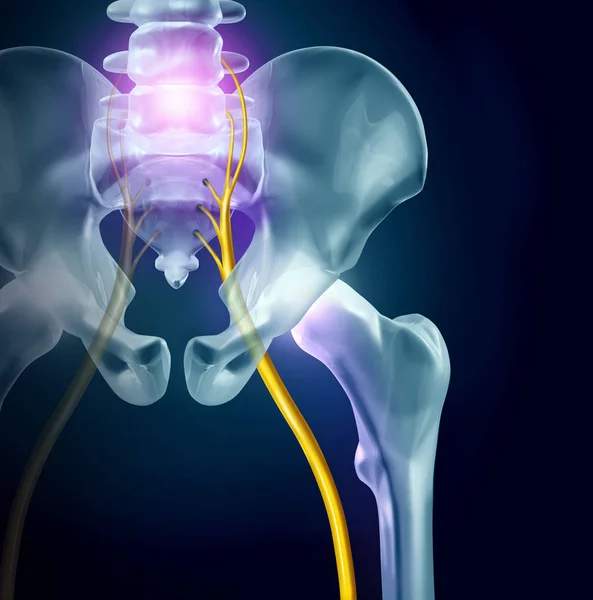Do you get a burning or shooting pain in the back of your leg when you stand or sit for too long?
Do you experience numbness, pins and needles or tingling in your leg or foot?
Are you looking for alternatives to tablets, injections or surgery to get rid of these symptoms?
Sciatica refers to compression or irritation of the sciatic nerve (the largest nerve in your body) which forms just outside your lower back and passes through the buttock, down the back of the leg and ends at the foot. The sciatic nerve contains many nerve fibres which transmit information about sensation, as well as transmitting signals to the leg for movement. When the sciatic nerve is compressed (squashed) anywhere along its path the patient will start to experience one or more of the symptoms described above. If it is REALLY squashed (think stepping on a hose) then the signals cannot “get through” and the patient will experience weakness or loss of control of the leg.
What Causes Sciatica?
The sciatic nerve can be squashed anywhere along its path, from the lower back to the foot, but the most common sites of compression are in the lower back or the buttock. A disc bulge or disc herniation, arthritis of the small joints in the lower back, or tightness of the deep muscles of the buttock are the three most common causes of sciatica that we see in our practice. Less common causes of sciatica include a swelling or mass somewhere in the buttock or leg putting pressure on the sciatic nerve.
How Do I Know If I Have Sciatica?
Sciatica is nerve pain and so to correctly diagnose it you should have nerve related symptoms, which include pins and needles, numbness, burning or shooting pain. You must also have one or more positive nerve tests in the clinic. An MRI can only show you about structure and cannot predict the level of pain, weakness or difficulty you might have—it supplements a good physical examination and should come AFTER a proper physical assessment, not before.
Can Physio Help Me?
Physio is helpful for around 75% of patients with sciatica. The key is to understand the cause of your sciatica (do you have a disc herniation, facet joint arthritis, problem in the buttock…) and then focus on treating the cause. It can take 2-3 weeks of treatment before the patient begins to really feel better, but in many situations we are able to resolve the patient’s problem and help them get back to normal.
Often patients tell us they have been prescribed strong painkillers like lyrica, tramadol and others with limited success. The problem here is that these drugs act on the brain NOT on the sciatic nerve itself. If you have sciatica you need to treat the problem, not just mask the symptoms. Remember, the first step is to understand the CAUSE of your sciatica.
What To Do Next:
If you are struggling with sciatica and you identify with the symptoms and problems described above, there are 3 things you can do:
- Nothing… Not Recommended! When we ignore problems with our health, they usually worsen over time, not just resolve and get better on their own.
- Book an Appointment to see one of our experienced Physiotherapists. They will take a proper history and complete a thorough physical examination to work out if you do indeed have sciatica and what the cause is. Once we know the cause, we can begin treatment to address that cause… And get you feeling and moving better!
- If you’re NOT SURE if you have sciatica, or whether we can help, call Mary or send us an email, titled Help Needed. Describe your symptoms, how long you’ve had them for and what you have done so far to help. We will reply with some advice and suggest what to do next.
Send the email to: nathan@personalbestphysio.com.au






